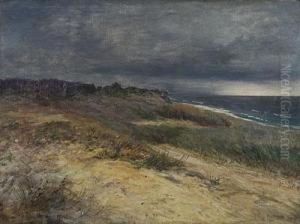Maria Von Keudell Paintings
Maria von Keudell was born in 1889 in Germany, a period marked by its rich cultural heritage and significant historical transformations. Not much is publicly documented about the early life and death of Maria von Keudell, which is not uncommon for many women artists of her time, who often remained underrecognized compared to their male counterparts. Despite the scarcity of detailed biographical information, it is known that she made notable contributions to the art world during her lifetime, particularly within the realms of painting and drawing.
Maria von Keudell's artistic endeavors are reflective of the broader artistic movements of her era, which included Impressionism, Expressionism, and the early stages of Modernism. Her works, however, have not been widely studied or exhibited, which is indicative of the challenges many female artists faced in gaining recognition and visibility in the predominantly male-dominated art world of the 19th and early 20th centuries.
The details of Maria von Keudell's education and artistic training remain largely unrecorded, but it can be inferred that she had access to some form of artistic education, as was common among individuals of her social standing during that period. It is possible that she was involved in artistic circles that were prevalent in Germany at the time, which were known for their vibrant discussions and exchanges on art, philosophy, and society.
Despite the lack of extensive records on Maria von Keudell's life and work, her contribution to the art world is part of the broader narrative of women artists striving for recognition and representation in the art history canon. The story of Maria von Keudell serves as a reminder of the many talented artists whose works and lives are yet to be fully acknowledged and appreciated.
The details surrounding Maria von Keudell's death remain as elusive as much of her life, highlighting the need for further research and investigation into the lives of female artists like her. Her legacy, while not widely recognized, is an important part of the tapestry of art history, representing the struggles and achievements of women artists in the face of societal and institutional obstacles.
